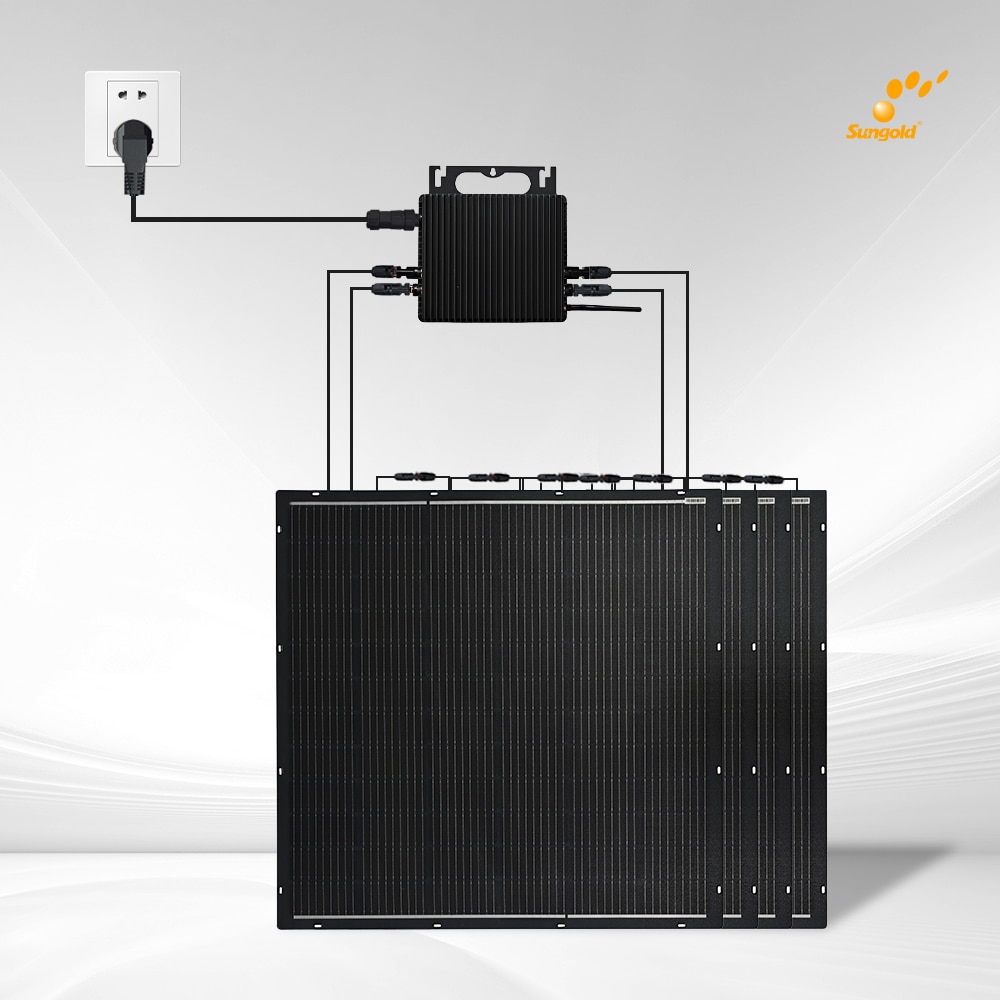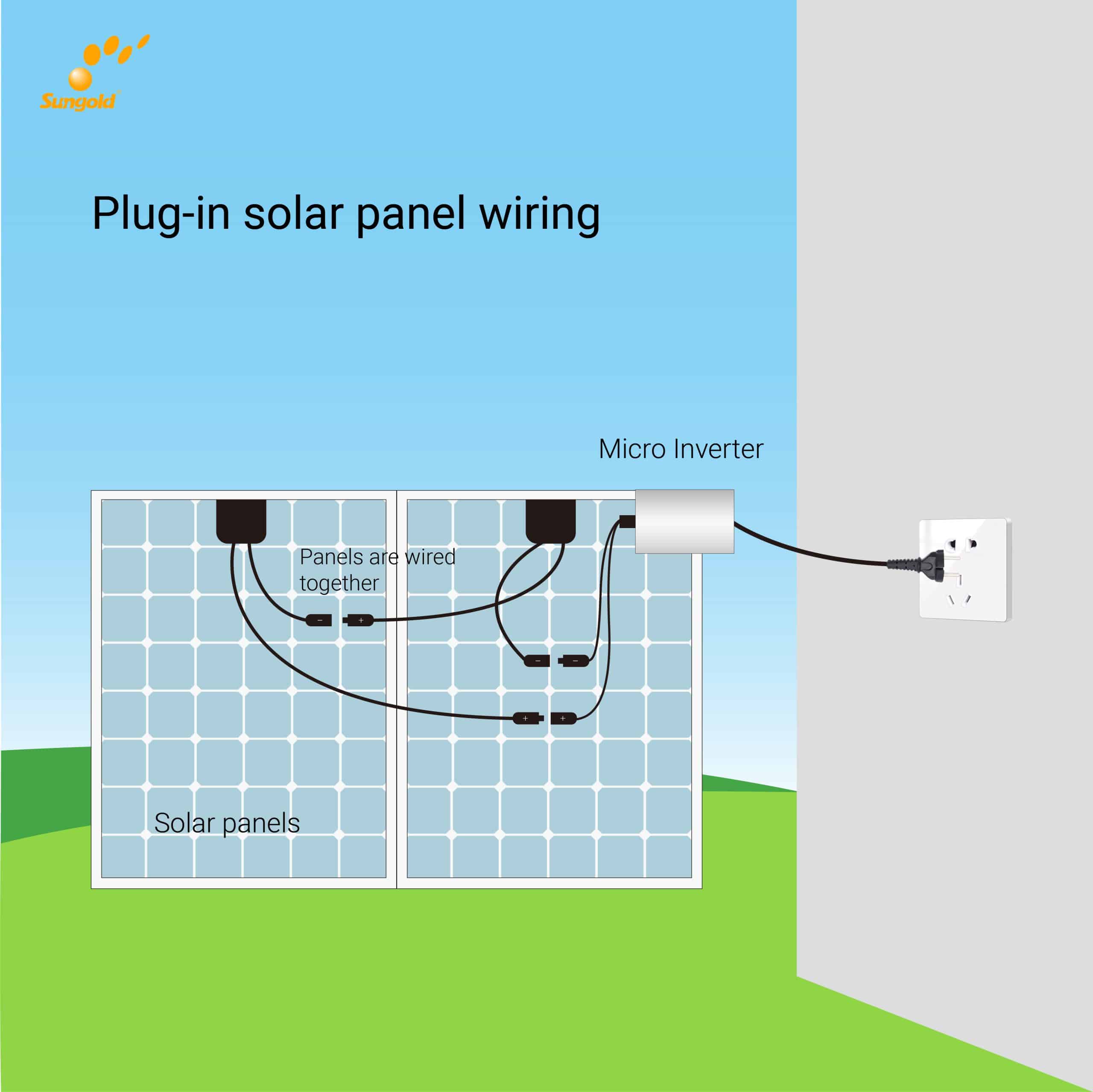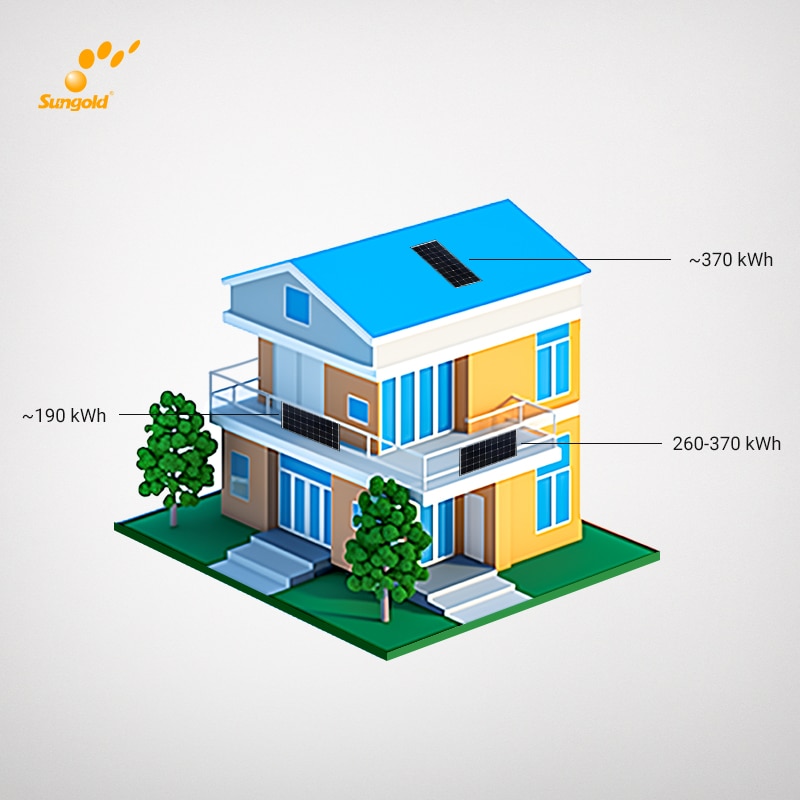A plug-in solar panel is a micro photovoltaic system that is fixed to the balcony railing and connected to an outlet. With this balcony solar system for private use, you can produce your own electricity and use it yourself. You note: You don’t necessarily need a large photovoltaic system that covers your entire roof. By simply attaching a solar module to your balcony socket, you can do your best to help the energy transition.
Table of Contents
Plug-in solar panels: market trends
The installation of plug-in solar systems has increased significantly in Germany. The number of small systems registered in the first quarter of 2023 increased more than sevenfold compared with the same period last year, according to official data. At the same time, in Italy, Enel, the largest electricity supplier, is also promoting this plug-and-play method of generating household electricity. Among them, other European countries such as Poland, France, the Netherlands, the United Kingdom, Austria, Switzerland and Hungary are also “very interested” in this technology. Each state is also trying to reduce the complex procedures involved in installing such equipment.

Additionally, balcony solar panels do not require registration with an operator like traditional rooftop or ground-mounted systems. Normally, when you connect solar panels to the main grid, you need to report them to the operator. However, if your solar system is below the European ceiling standard of 800 W, you do not need to register it with the operator.
German standards are slightly different, with an upper limit of 600 W balcony system. But that could all change soon, with the VDE (Verband der Elektrotechnik Elektronik Informationstechnik eV) drafting a proposal in January 2023 to raise the standard to 800 W. This will make it easier for German users to obtain solar energy through small power generation systems, rather than just traditional rooftop or ground-mounted solar systems.
As the world becomes a cleaner energy world, this is an important step forward for balcony solar systems.It will allow German households to use solar energy more efficiently to meet their electricity needs, while removing any potential barriers that German residents may find objectionable when exploring the possibilities of solar power.
How do plug-in solar panels work?
The main appeal of plug-in solar panels is that they are easy to understand and cheap. Plug-in solar panels (also known as “plug and play solar panels”) are usually available in pairs and can be connected together to form arrays ranging from just two solar modules (around 800 watts) all the way up to what you want quantity.
When sunlight shines, the solar panel set will generate DC voltage, and the micro-grid inverter converts the DC voltage into AC voltage, synchronizing with the utility grid power. It feeds power into the home grid, generating electricity and reducing your electricity bill. Residents can generate their own solar electricity from one to three photovoltaic modules suspended from balconies or walls, or installed on terraces, rooftops or gardens. Best of all, these devices don’t need to be installed by a mechanic.
DC power from the solar modules is conducted to a small box, where it is converted into grid-standard alternating current (AC) via an inverter. The unit can then simply be plugged into a standard wall outlet.
Unfortunately, those with a north-facing balcony who can only install modules vertically will receive less than a third of the potential yield.
Berlin University of Applied Sciences has developed a free solar simulator which calculates easily online whether it’s worth installing a solar system on your balcony.

How much electricity does the balcony solar panels?
When sunlight shines, the solar panel set will generate DC voltage, and the micro-grid inverter converts the DC voltage into AC voltage, synchronizing with the utility grid power. It feeds power into the home grid, generating electricity and reducing your electricity bill. Residents can generate their own solar electricity from one to three photovoltaic modules suspended from balconies or walls, or installed on terraces, rooftops or gardens. Best of all, these devices don’t need to be installed by a mechanic.
DC power from the solar modules is conducted to a small box, where it is converted into grid-standard alternating current (AC) via an inverter. The unit can then simply be plugged into a standard wall outlet.
Sungold’s mini solar systems contain these special monocrystalline solar cells, which are the most efficient products currently on the market. What this means for you:
*Bring you higher power generation through your photovoltaic system
*Lower power costs due to less power purchased from energy suppliers
Amortize the acquisition cost of your balcony solar system faster
Solar modules generate the most electricity when in direct sunlight, which is why they are particularly efficient in sunny areas and in the spring and summer.
In sun-drenched areas of Africa, the Middle East, Australia, China, Latin America and the United States, a 400-watt module can generate up to 800 kilowatt hours (kWh) per year. In less sunny Germany and central Europe, the figure is about half.
But plug-in balcony component placement is also critical. It is best to arrange the modules facing south and at an angle for optimal power generation.
In Germany, a 600-watt module installed on a south-facing facade or balcony perpendicular to the sun’s rays generates an average of approximately 390 kWh per year. Modules facing east or west can still generate around 285 kWh per year.

Benefit every year thanks to plug-in solar panels!
But it’s not just the environment and living things that benefit. You can also benefit from solar power generation and use on your private balcony solar system. In theory, you could choose an electricity supplier that produces its own green electricity. You’ll also be contributing to the environment. However, your dependence on your electricity provider and your annual electricity bills will be high.
However, if you also decide to install your own photovoltaics on your balcony, you will become more independent and save money in the long run. As electricity costs continue to rise, you can save more and more every year by using your own mini PV system. Just one solar module for a balcony socket is enough to meet the base load of a home. With two or even more balcony solar modules, your prospects for cost savings with a plug-in solar system are even greater.
In sun-drenched areas of Africa, the Middle East, Australia, China, Latin America and the United States, a 400-watt module can generate up to 800 kilowatt hours (kWh) per year. In less sunny Germany and central Europe, the figure is about half.
But plug-in balcony component placement is also critical. It is best to arrange the modules facing south and at an angle for optimal power generation.
In Germany, a 600-watt module installed on a south-facing facade or balcony perpendicular to the sun’s rays generates an average of approximately 390 kWh per year. Modules facing east or west can still generate around 285 kWh per year.
Here's why plug-in solar panels are worth it:
*One balcony is enough to run a balcony power plant.
*Sungold Photovoltaic Solar Systems/Citizen Solar Systems are available to tenants and owners
*Generate your own electricity and reduce costs
* Supplying power to the public network is possible and provides a small amount of additional income

























